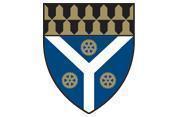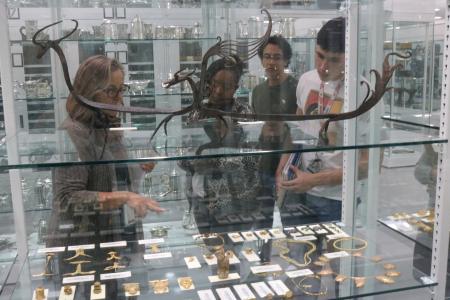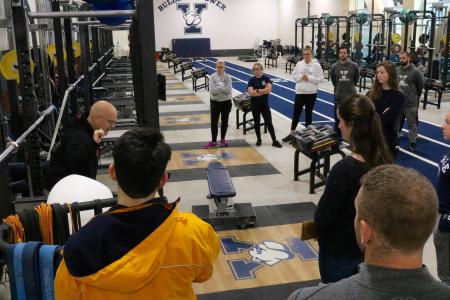ENAS 118: Art, Weightlifting and Surgical Procedures

The students of Engineering Innovation & Design (ENAS 118) have a diverse set of tasks this semester that take them from the operating room to the museum and to the gym.
Taught by SEAS senior research scientist Larry Wilen and SEAS Deputy Dean Vince Wilczynski, the course taps the expertise of faculty and staff from numerous disciplines throughout Yale. Each of these experts tasks a student team with a problem to solve.
Daniel Wiznia, assistant professor of orthopedics and rehabilitation, is looking for a better suction tube to be used during surgeries to help clear blood and other material out of the way. Standard tubes often get clogged with debris, which disrupts and slows down the procedure. Wiznia’s hoping for a suction tube that avoids getting clogged and at the same time, doesn’t damage any nerves or anything else important.
 Three other student teams will be working on art-related projects. Working with Kate Schilling, associate research scientist at the Institute for the Preservation of Cultural Heritage (IPCH), and Cindy Schwarz, associate conservator of paintings for the Yale University Art Gallery (YUAG), one team will work on a way to measure the surface conductivity of paintings’ surfaces in a way that’s less intrusive than the standard method. Doing so would lead the way to cleaning the surfaces of artworks without the fear of damaging them. For another project, also led by Schilling, a team will explore new ways to monitor how paintings and other artworks fade over time.
Three other student teams will be working on art-related projects. Working with Kate Schilling, associate research scientist at the Institute for the Preservation of Cultural Heritage (IPCH), and Cindy Schwarz, associate conservator of paintings for the Yale University Art Gallery (YUAG), one team will work on a way to measure the surface conductivity of paintings’ surfaces in a way that’s less intrusive than the standard method. Doing so would lead the way to cleaning the surfaces of artworks without the fear of damaging them. For another project, also led by Schilling, a team will explore new ways to monitor how paintings and other artworks fade over time.
Carol Snow, objects conservator at the YUAG, wants to lend some interactivity to an upcoming exhibit at the museum that explores how ancient rituals appealed to the senses. The team working with her will essentially reverse-engineer the ancient jewelry in the exhibit and develop a way for visitors to create their own.
 Two other teams will be heading to the gym to work with Thomas Newman, director of sports performance and innovation. One project focuses on weightlifting, specifically the squat, a critical exercise for athletes. One common problem is that the lifters often don’t know how far down to go with the weights. Newman is looking for a device that will help weightlifters perform the exercise properly.
Two other teams will be heading to the gym to work with Thomas Newman, director of sports performance and innovation. One project focuses on weightlifting, specifically the squat, a critical exercise for athletes. One common problem is that the lifters often don’t know how far down to go with the weights. Newman is looking for a device that will help weightlifters perform the exercise properly.
And as workout rooms have become increasingly high-tech, iPads and other electronic devices have become an integral part of training. The problem is that all the cords make for a confusing mess, people forget to plug the devices in to recharge them, and sometimes things go missing. It also takes a lot of power from one source. Newman asked the students for a better way to manage all the wires.
It is, as usual, an ambitious set of goals. We’ll report back in eight weeks to see what the teams come up with.

